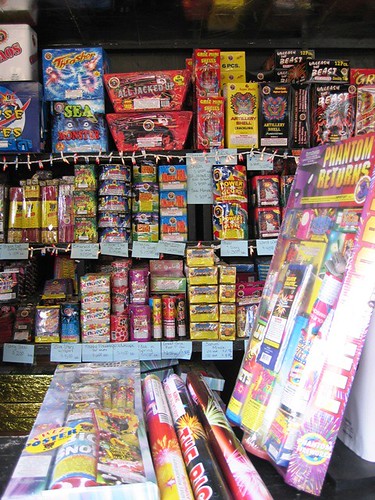Evolution of the 4th of July
Happy 4th of July, everyone !
A day like any other here, but I’ve noted the creeping silence that has enveloped blogs and e-mail accounts as US-based folks take off for the long holiday weekend. Some are boating or visiting relatives; others taking lazy days at home to mingle with neighbors and watch community fireworks. It’s a traditional mid-summer holiday; my memories are connected more to stages in life than to civil celebrations.
As a child, we would visit my relatives in Dayton, Ohio for the 4th.
The GE / Whirlpool park would have a open-air movie night, with everyone sitting on the grass with a picnic watching a washed-out projection of some battlefield epic. Tobruk was my favorite: Rock Hudson battling across the desert to blow up a petroleum farm.
 As a teen, I worked as a Wally-Y Day Camp counselor in Northbrook, IL. The 4th was the holiday that my best friend Jeff and I would drive up to Kenosha WI to get cases of beer, load up my purple Gremlin, and head back for all-night beach parties at Syd’s house in Glencoe.
As a teen, I worked as a Wally-Y Day Camp counselor in Northbrook, IL. The 4th was the holiday that my best friend Jeff and I would drive up to Kenosha WI to get cases of beer, load up my purple Gremlin, and head back for all-night beach parties at Syd’s house in Glencoe.
In the 80’s, we lived in Kennewick, WA, a hyper-patriotic town in the distant desert of Washington state. The 4th was an occasion for joining friends for a bar-b-q, watching fireworks over the Columba River from the apartment, and trying to avoid the 115 deg F daytime heat.
The 90’s found us raising kids near Seattle: there were obligatory trips to the fireworks stands to pick out the year’s explosives, inevitably spending about double what planned, then waiting for it to get dark enough to shoot them off from the driveway. It was a neighborhood affair, everyone would bring their contribution and we’d terrify small animals afraid of the noise until the wee hours. There would be an hour’s round of picking up spent casings and papers the morning after.
Today, there’s an expat bar-b-q outside Maastricht, and we’ll celebrate quietly with red, white, and blue flowers, German sausages standing in for hotdogs, Belgian beer in place of Pabst, and no way to make chocolate cupcakes with coloured frosting.
Still, it will be fun to have a bit of a celebration to remember all the good summer times gone, hopefully lots still to come.
Labels: US Holidays












